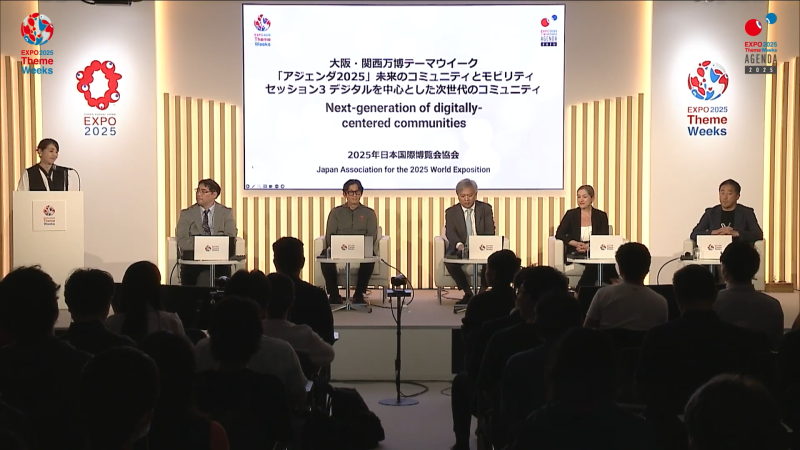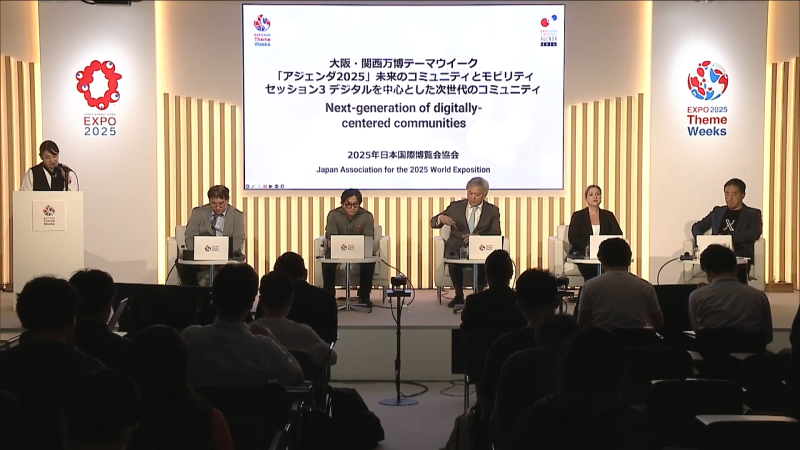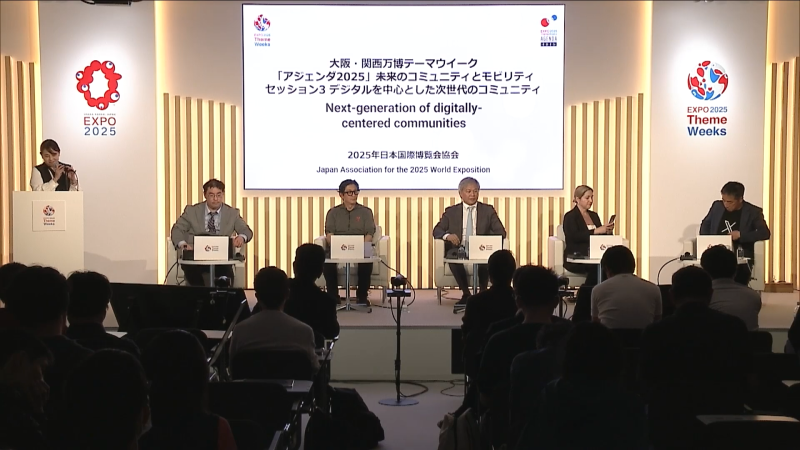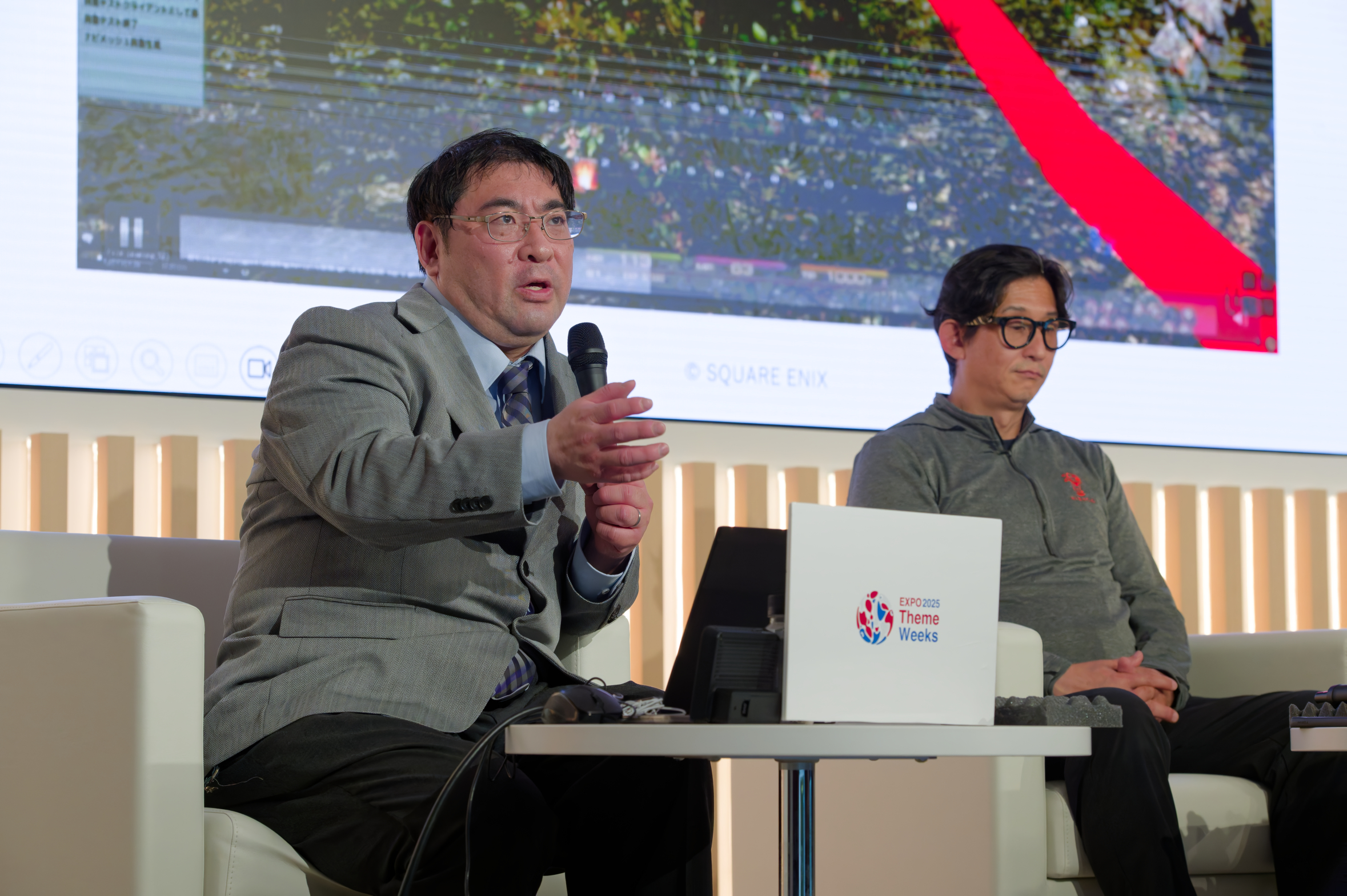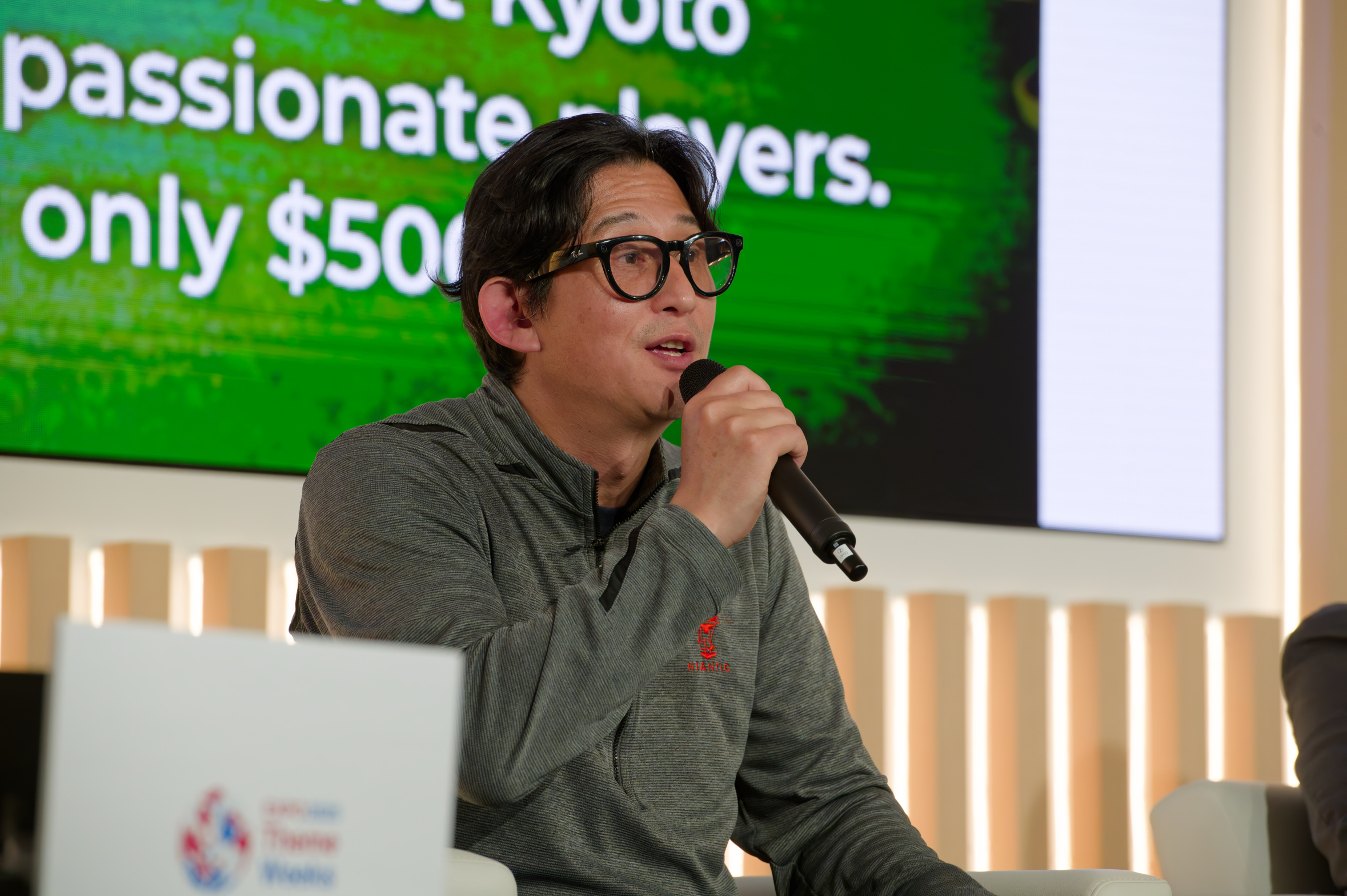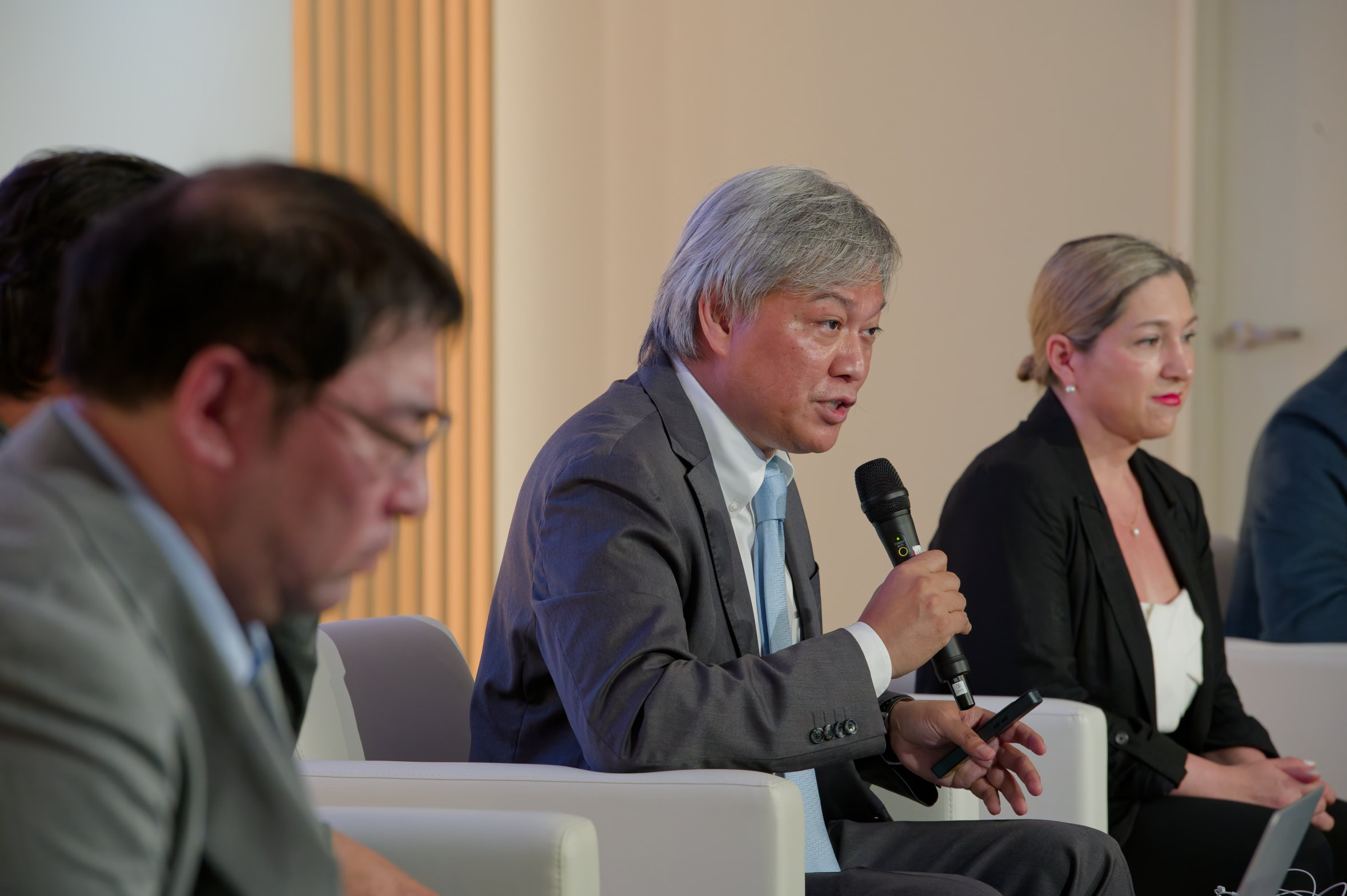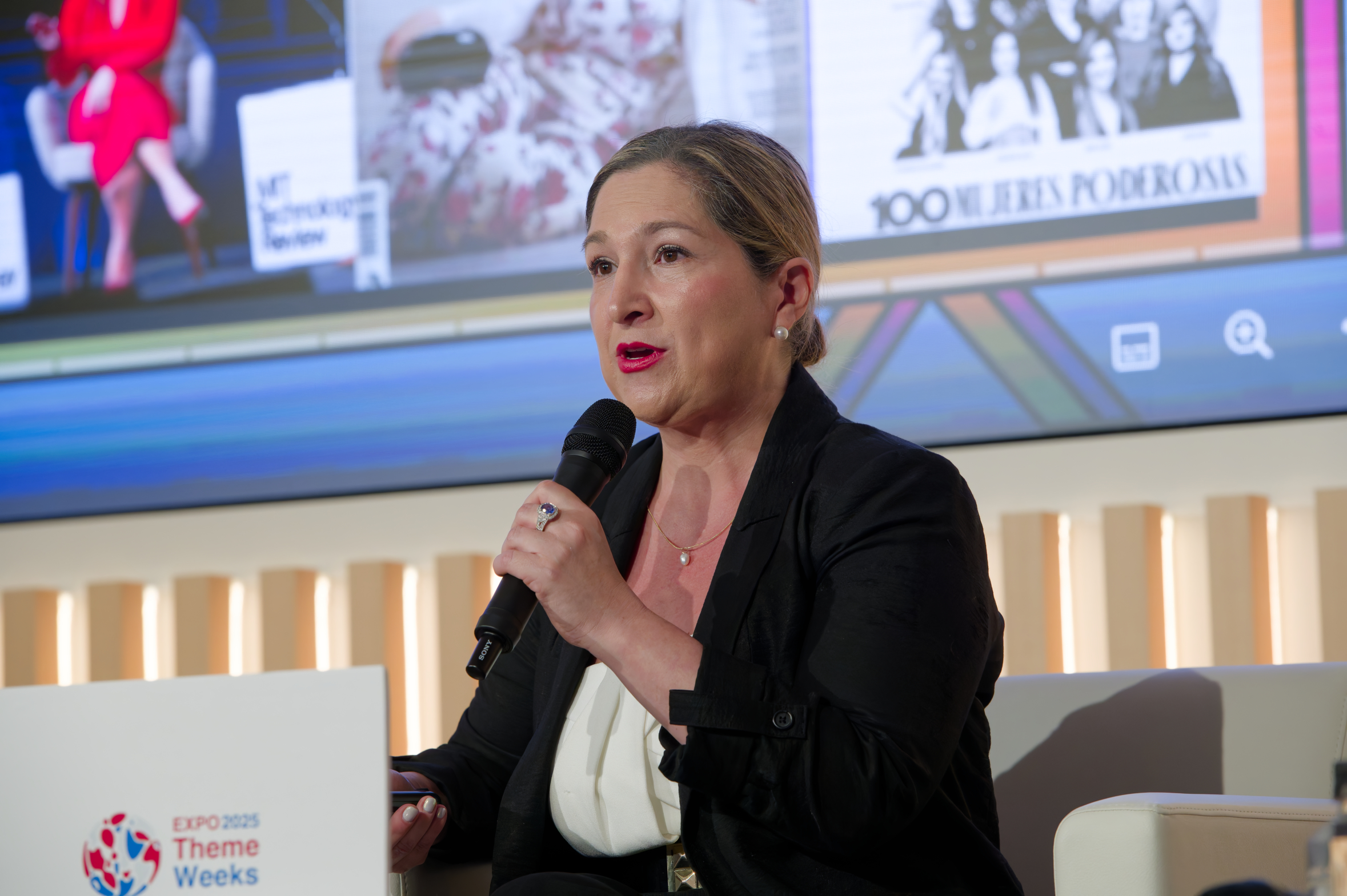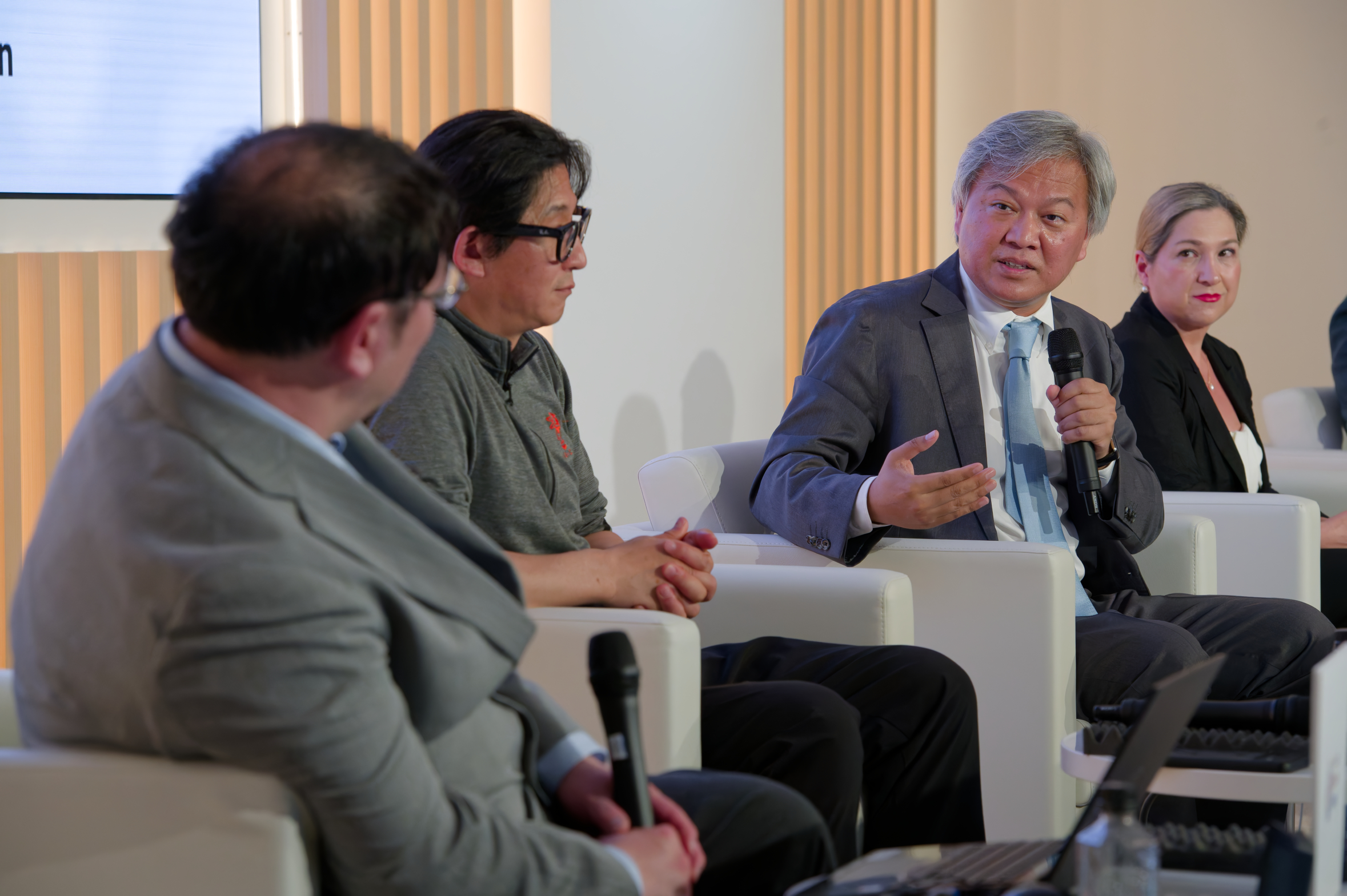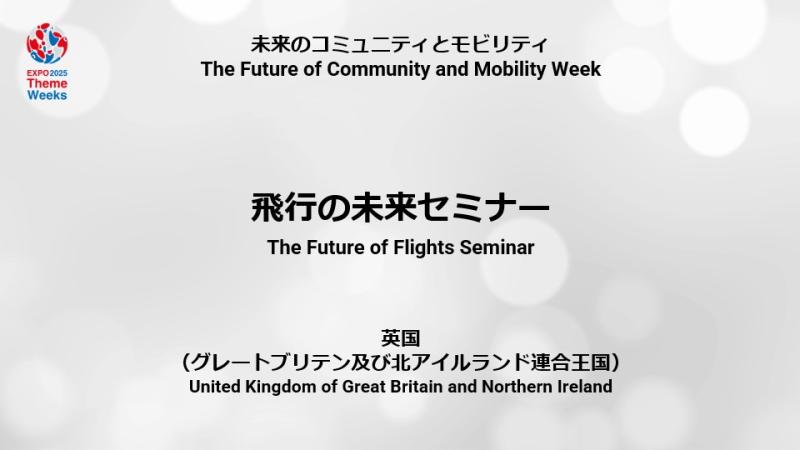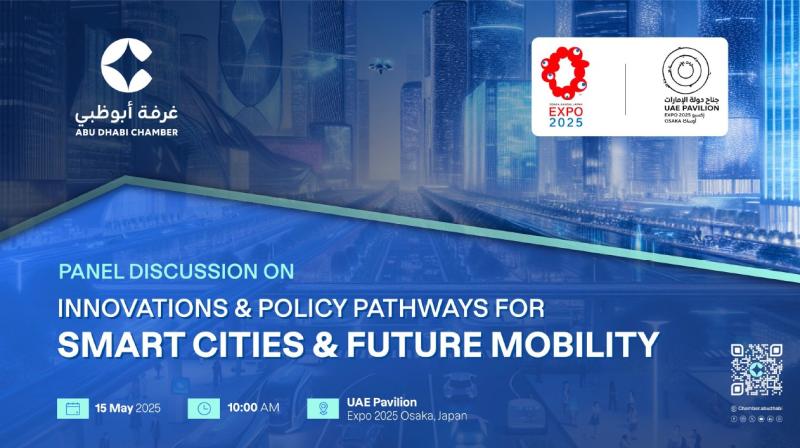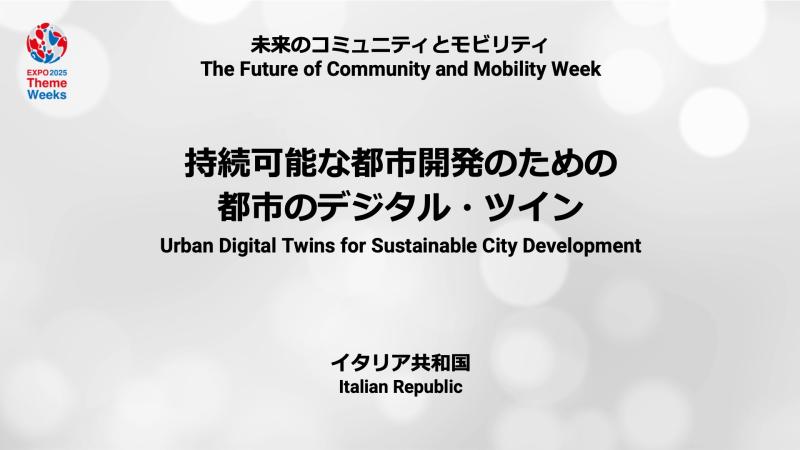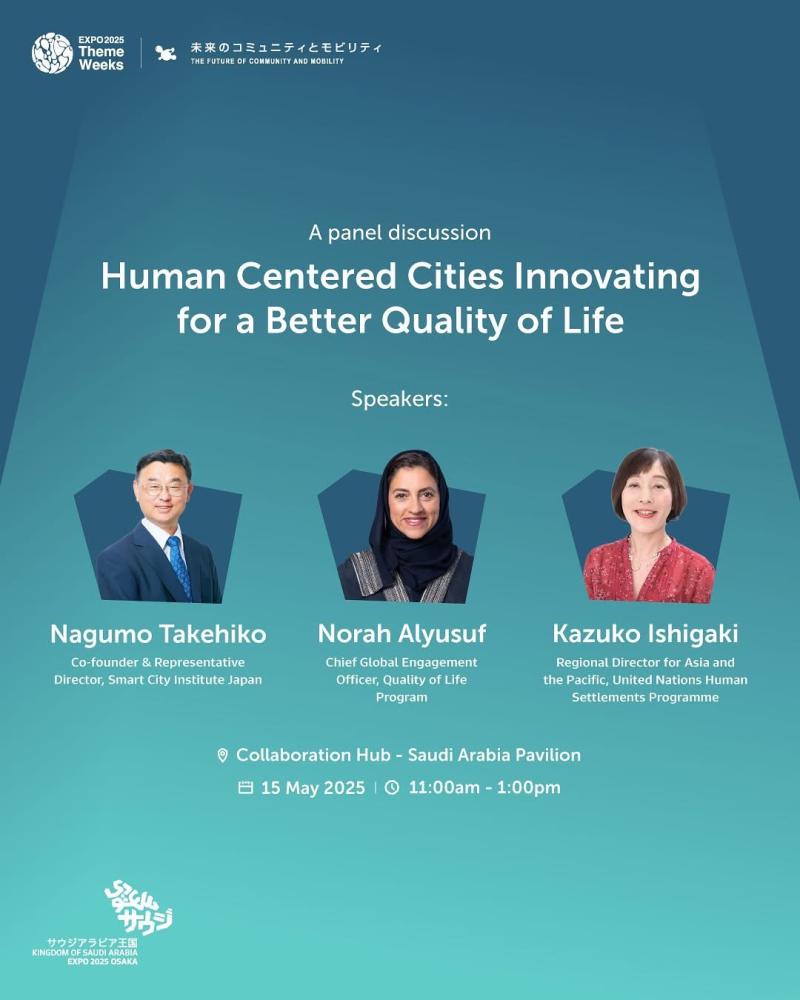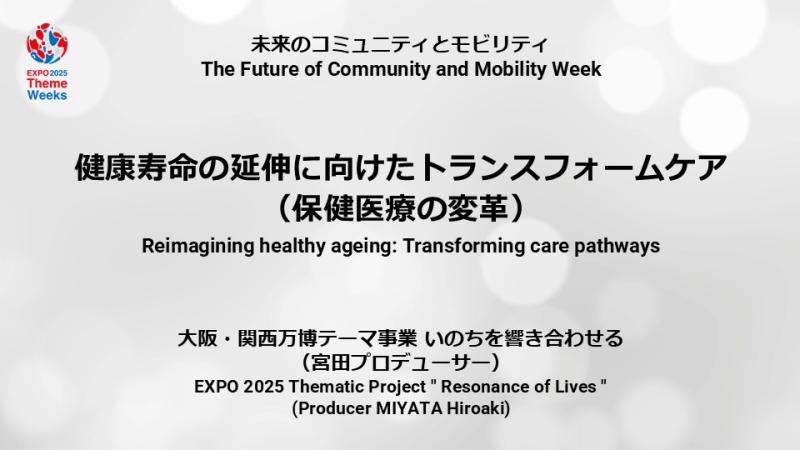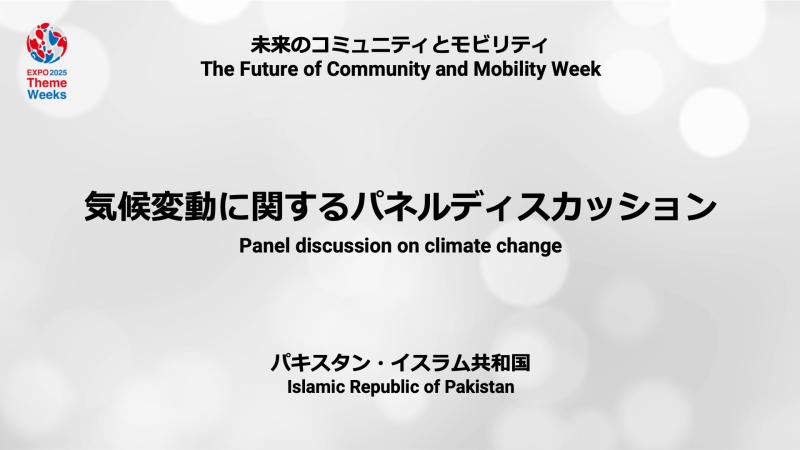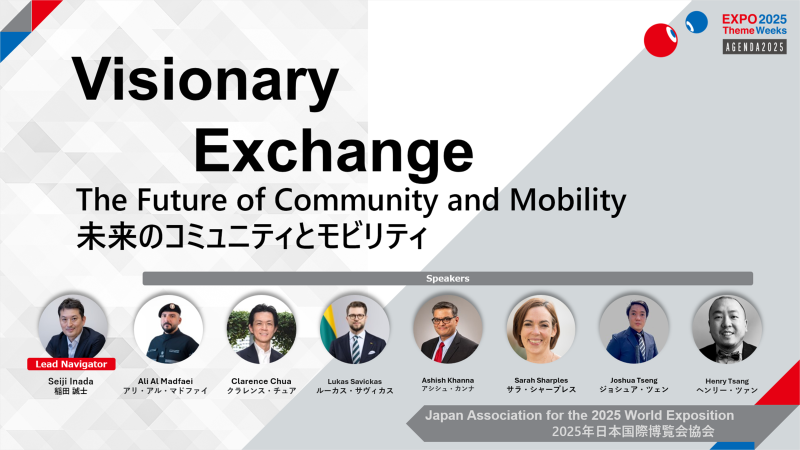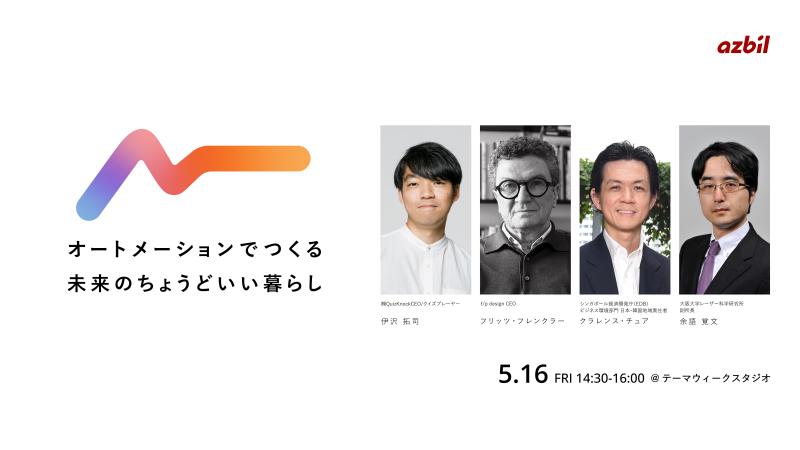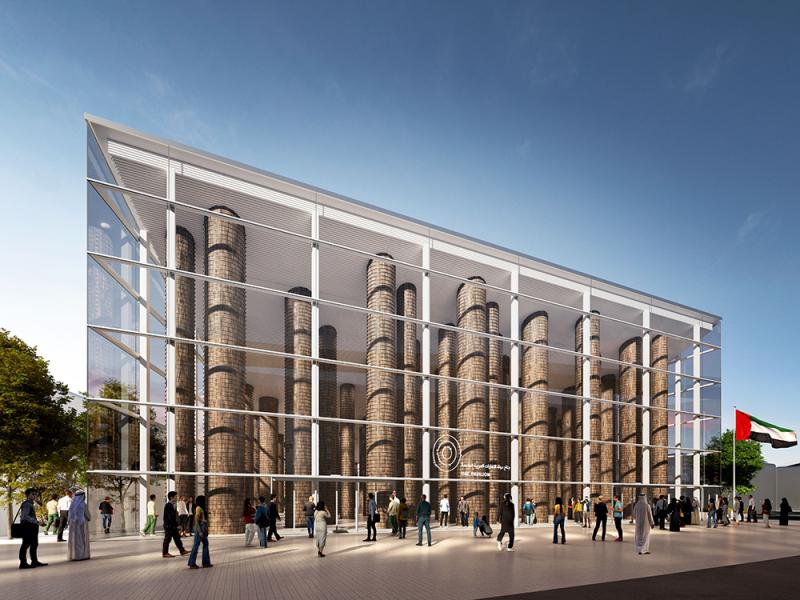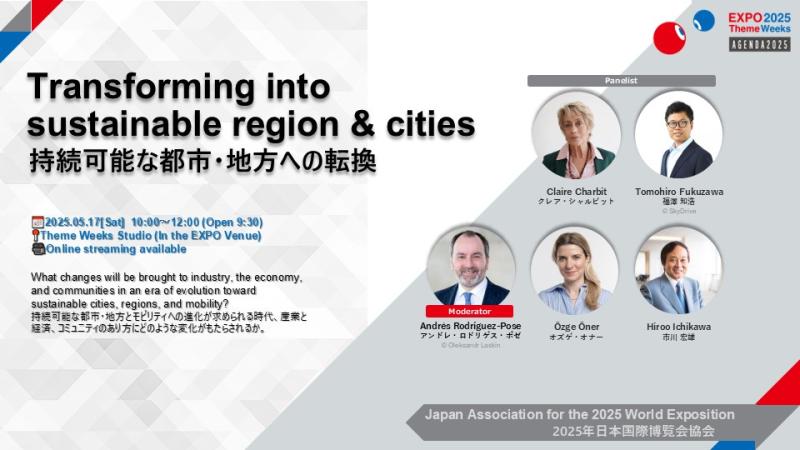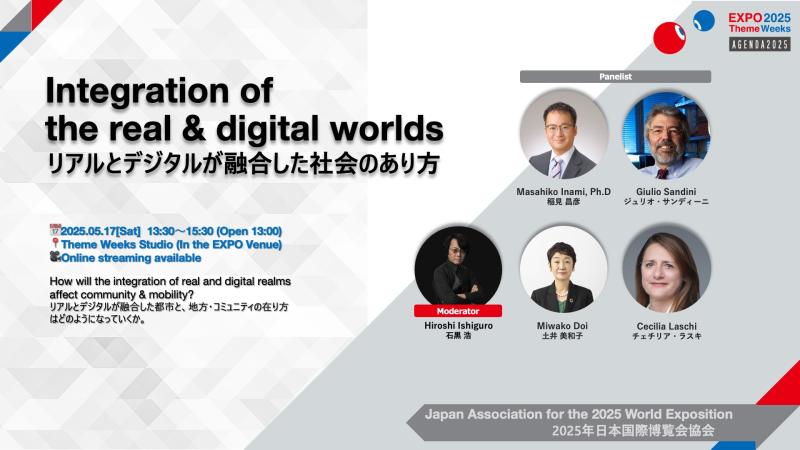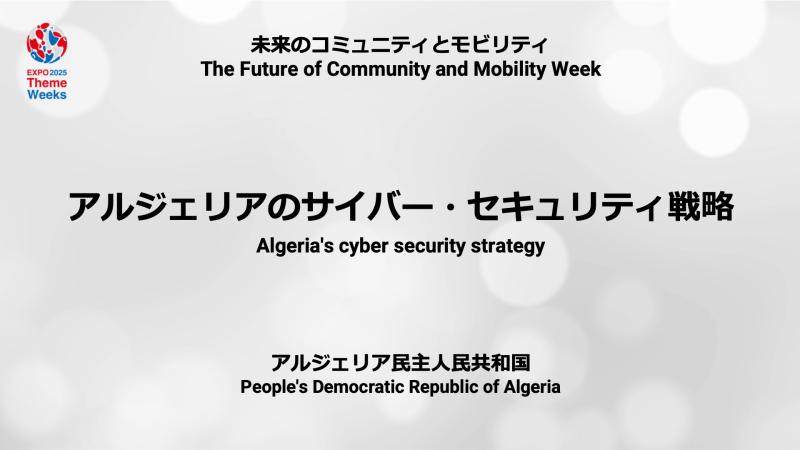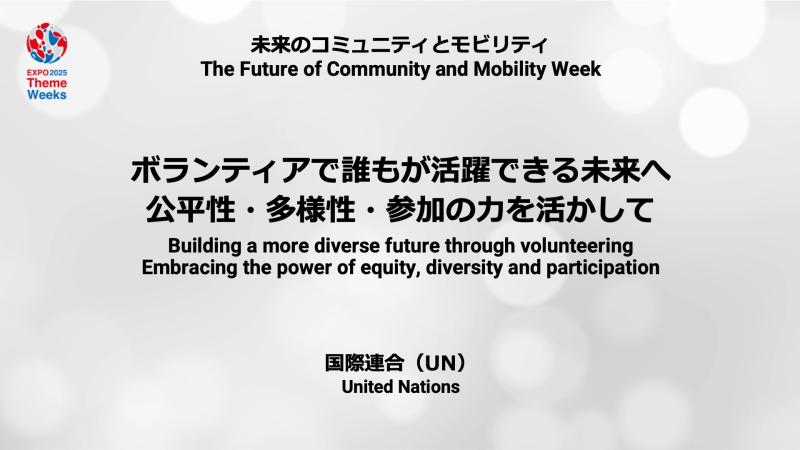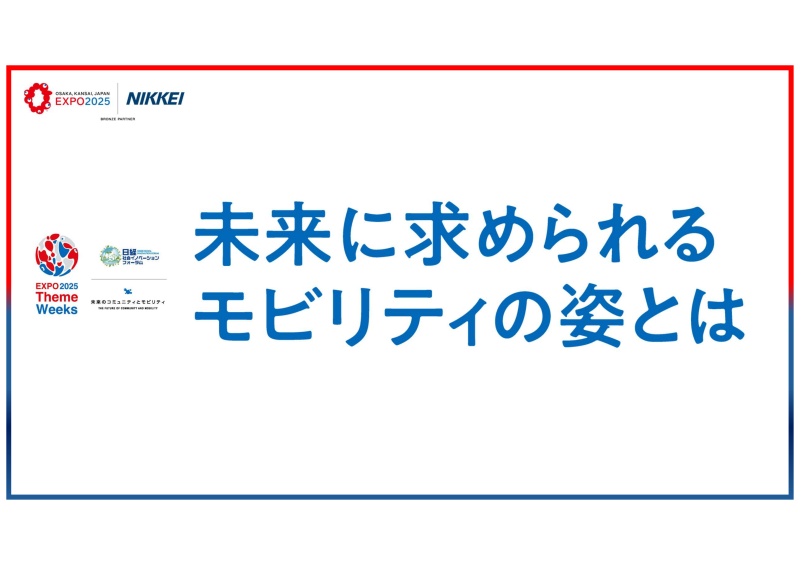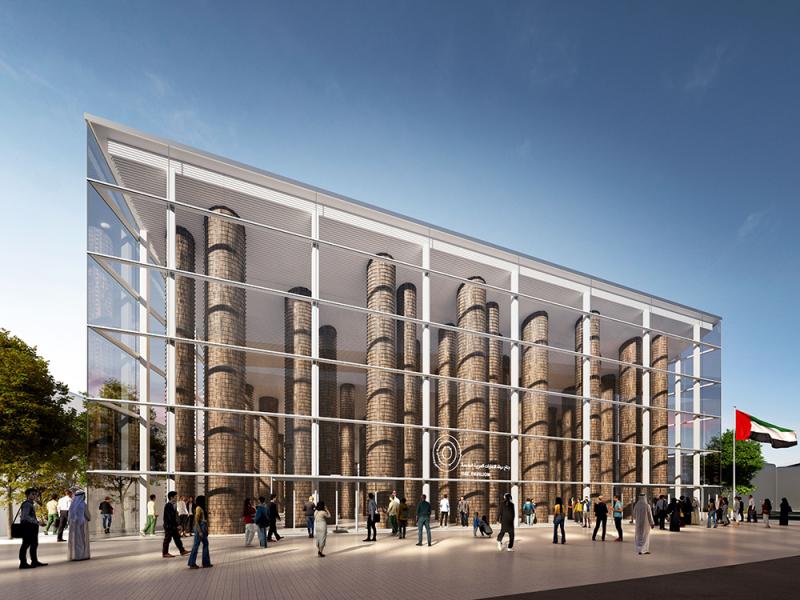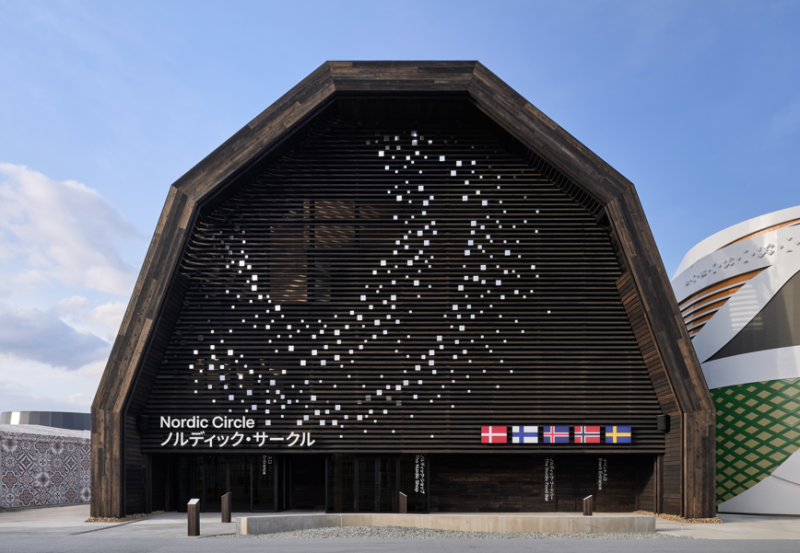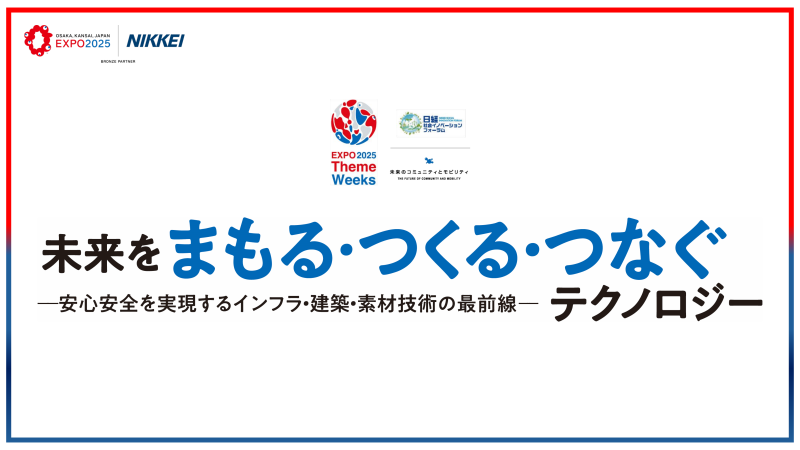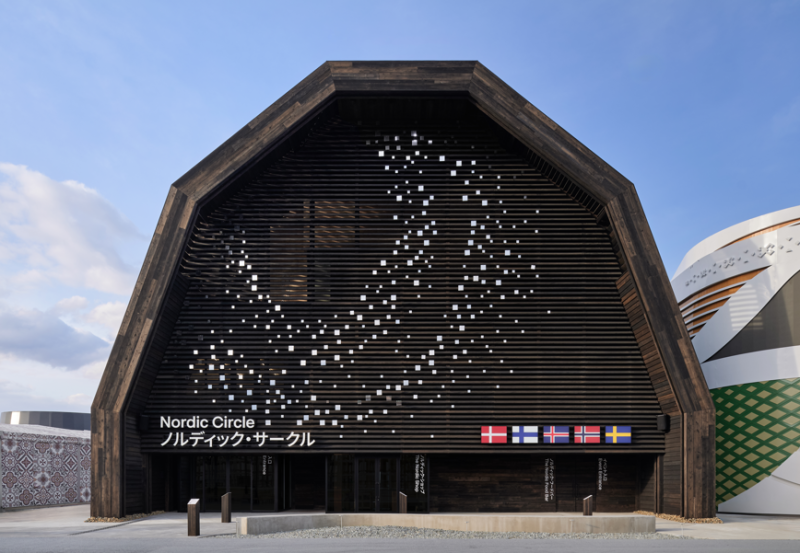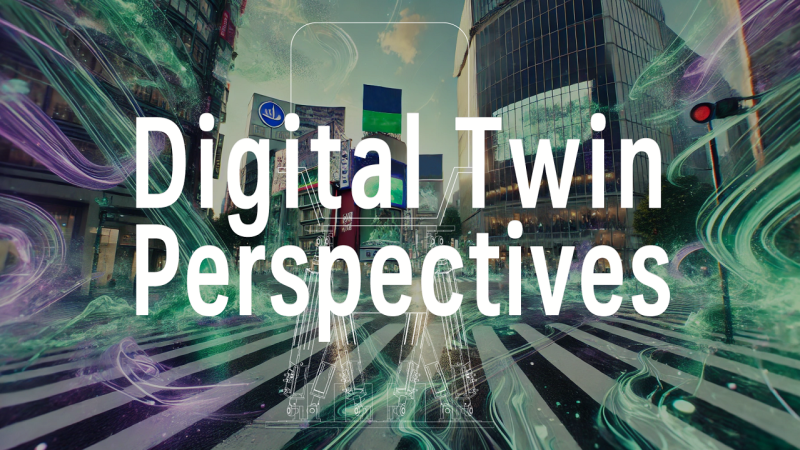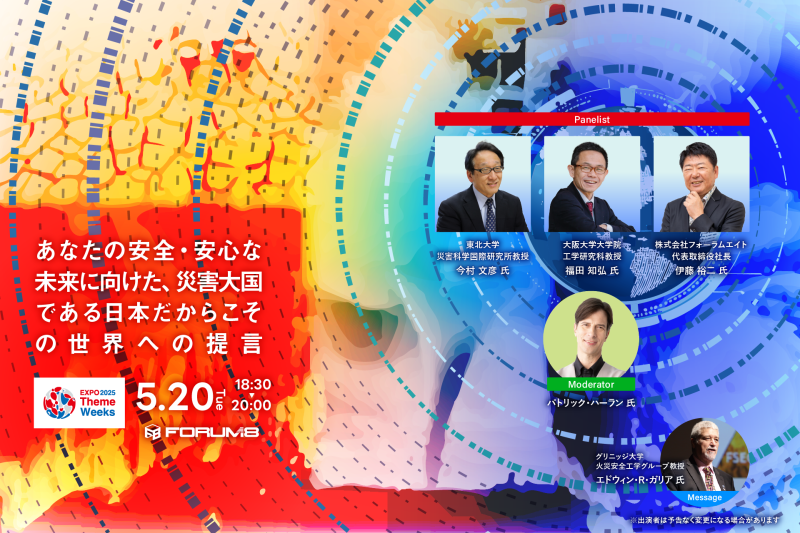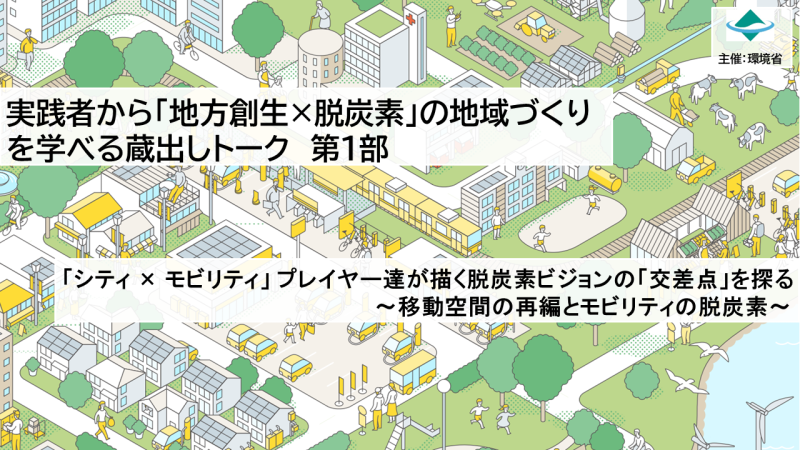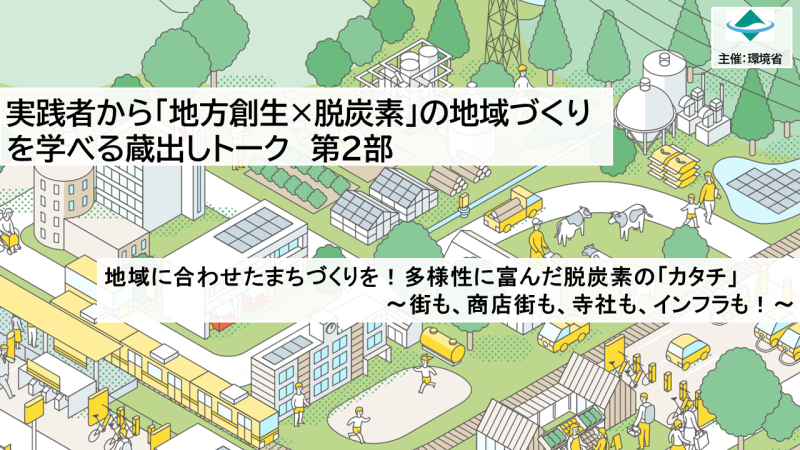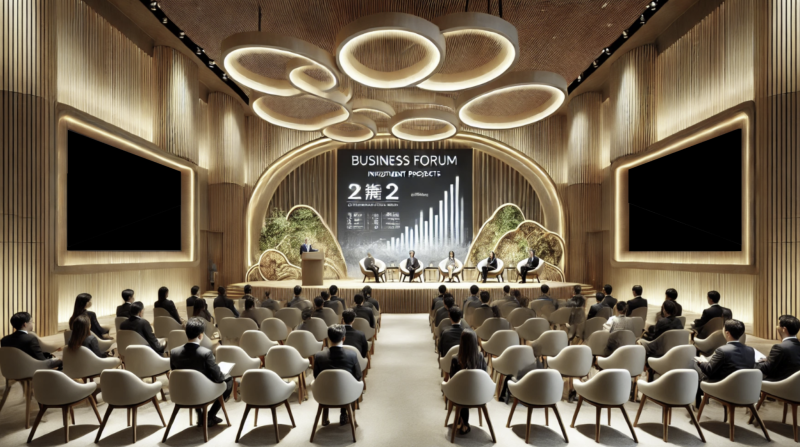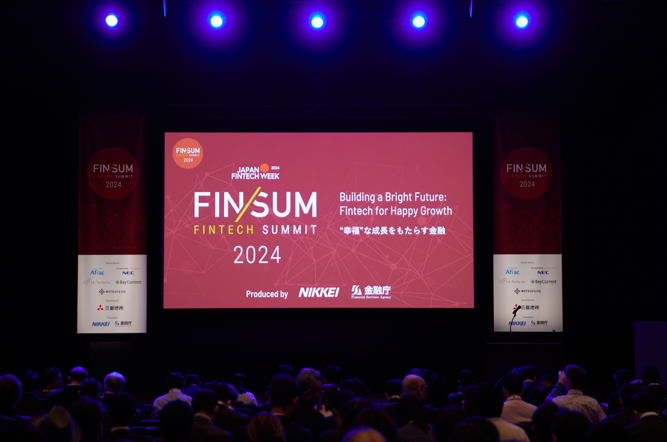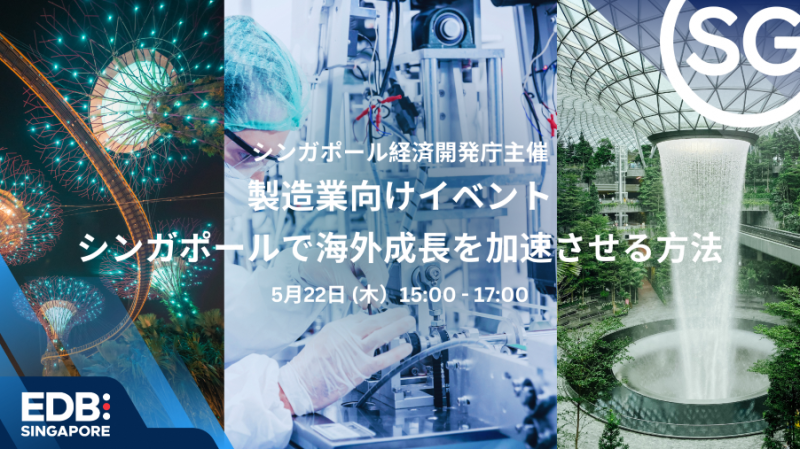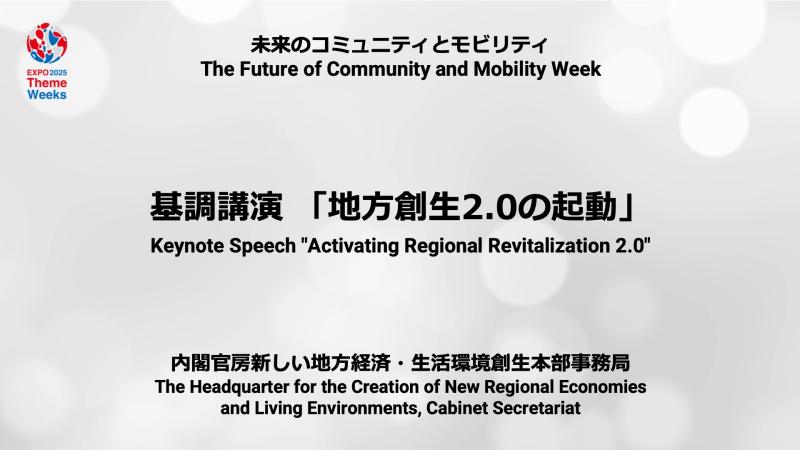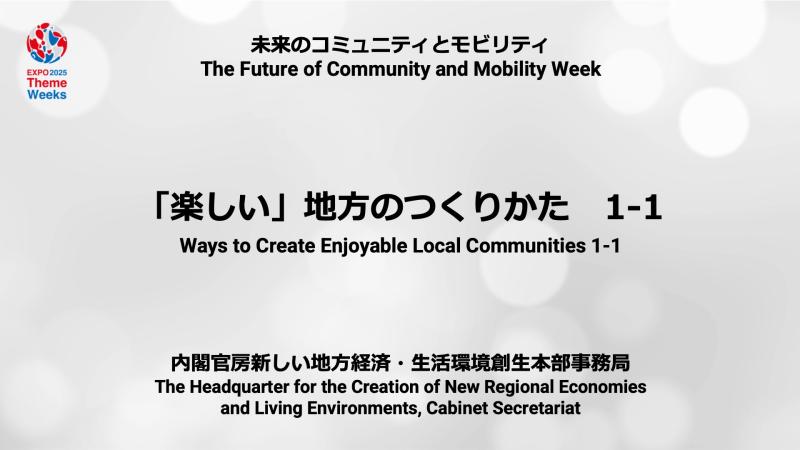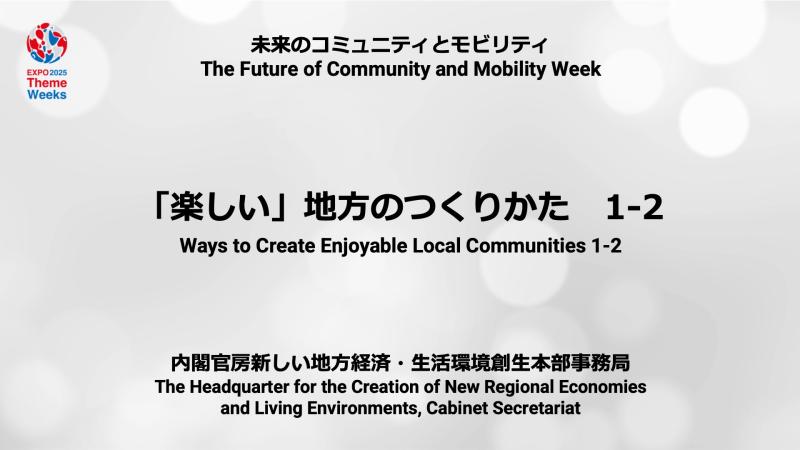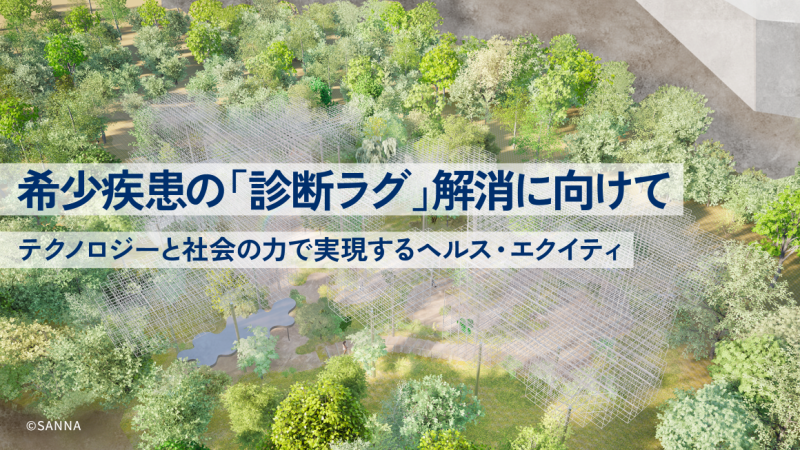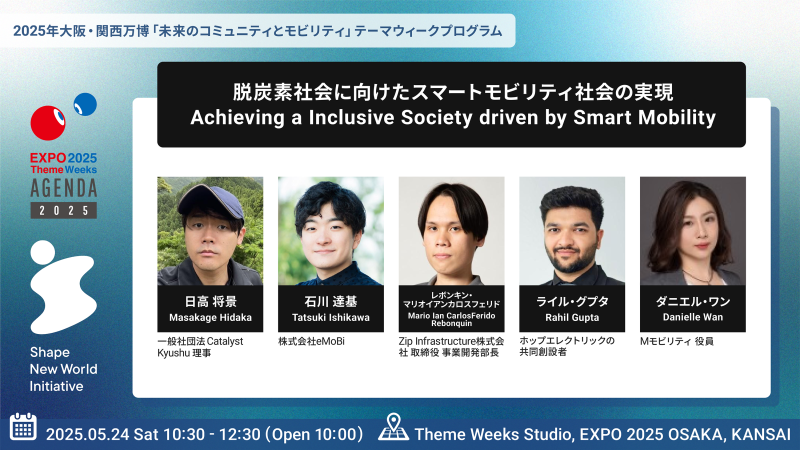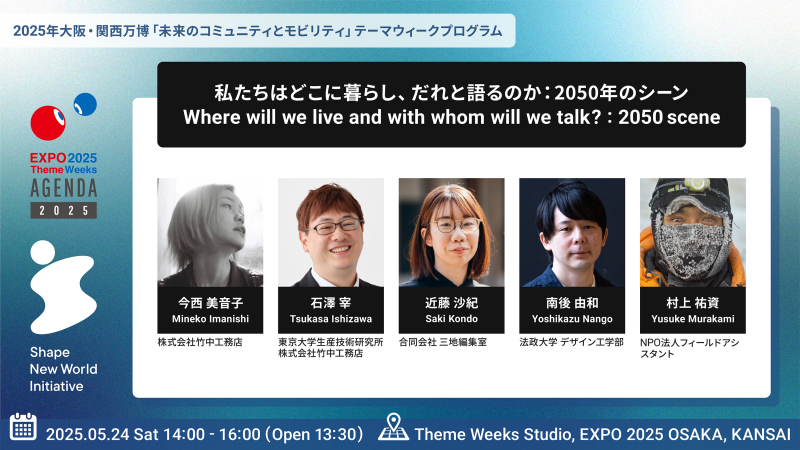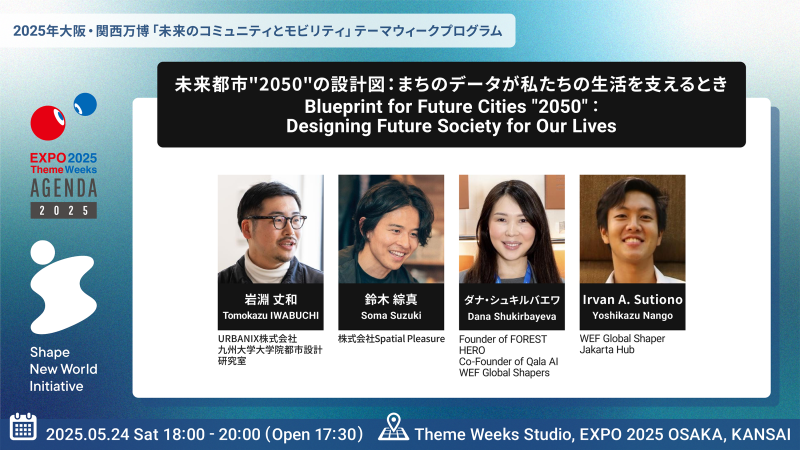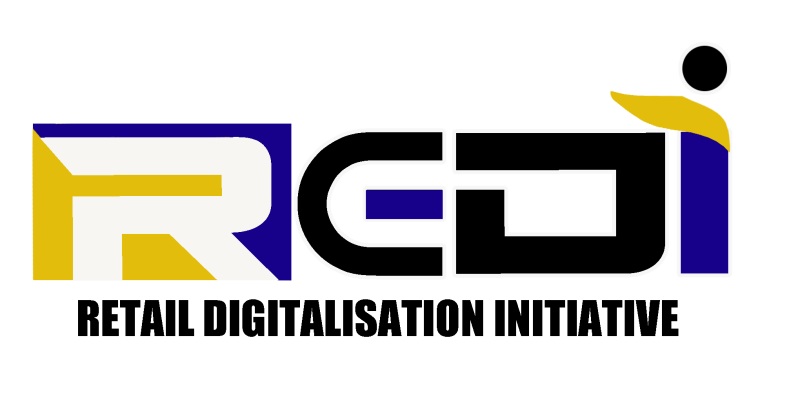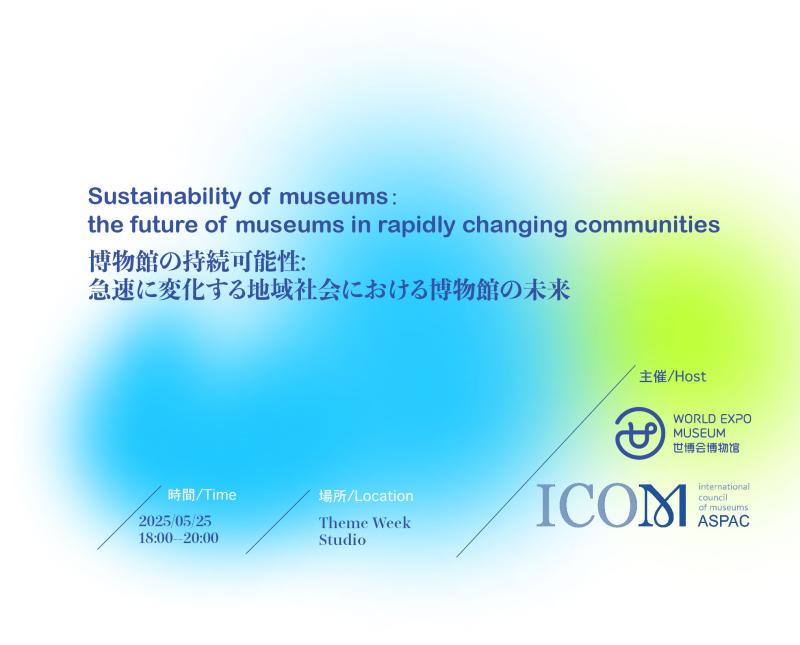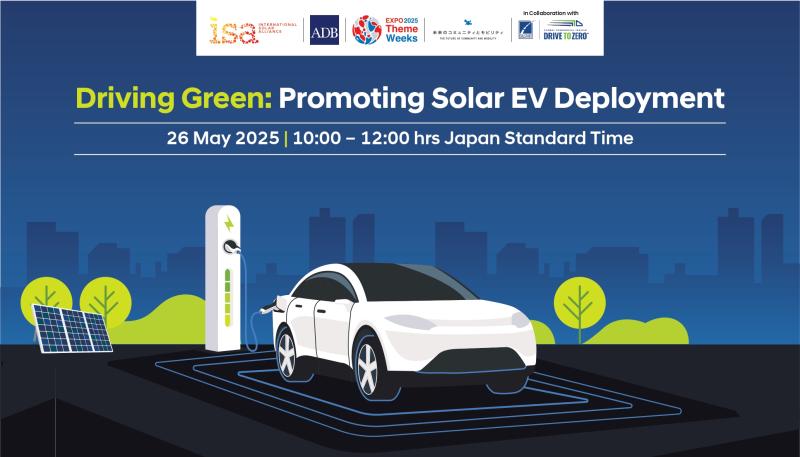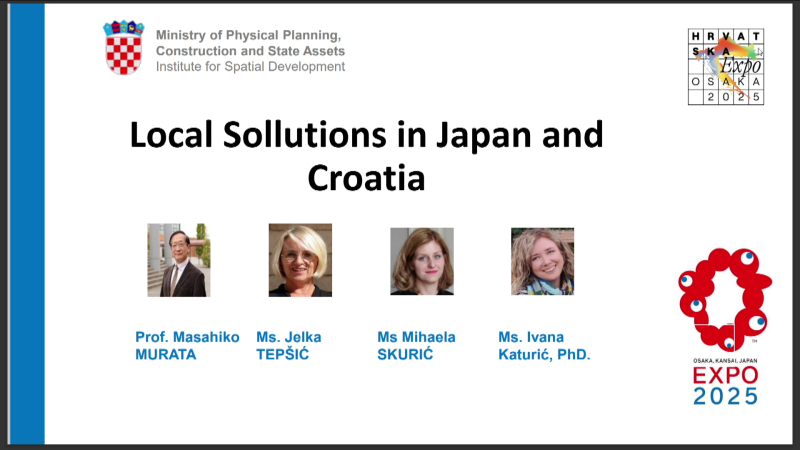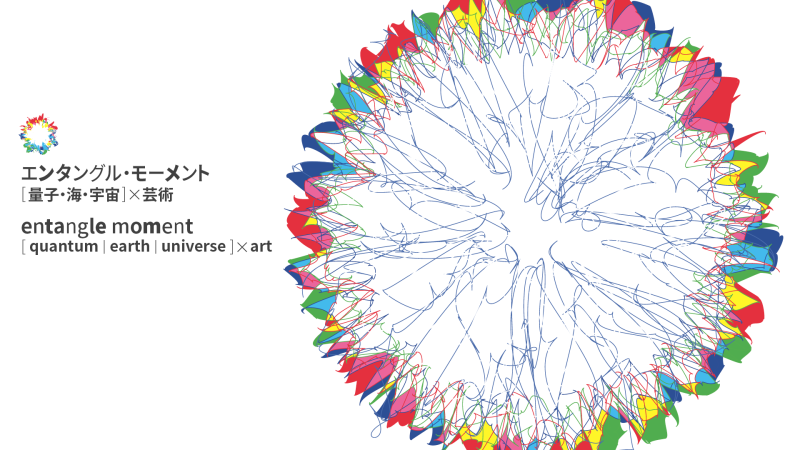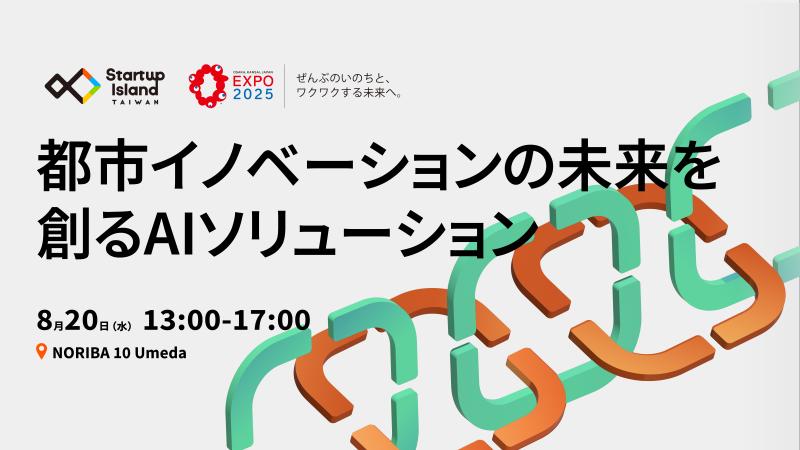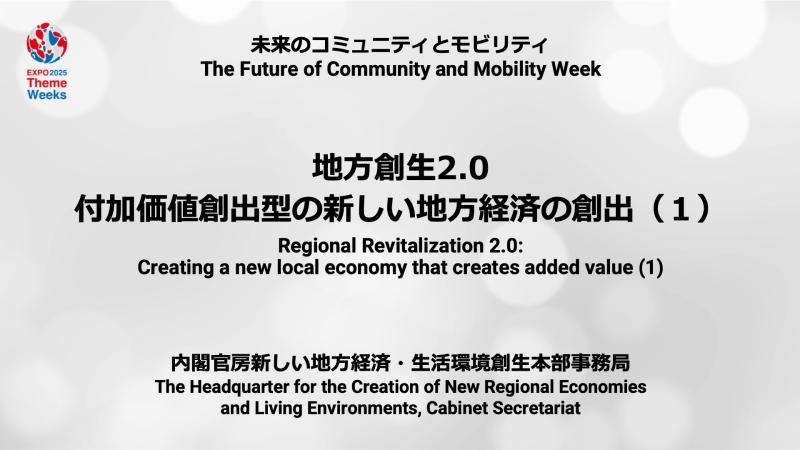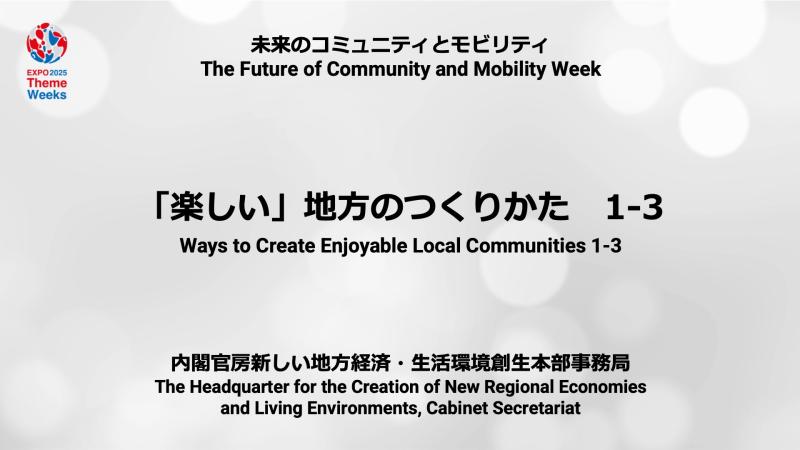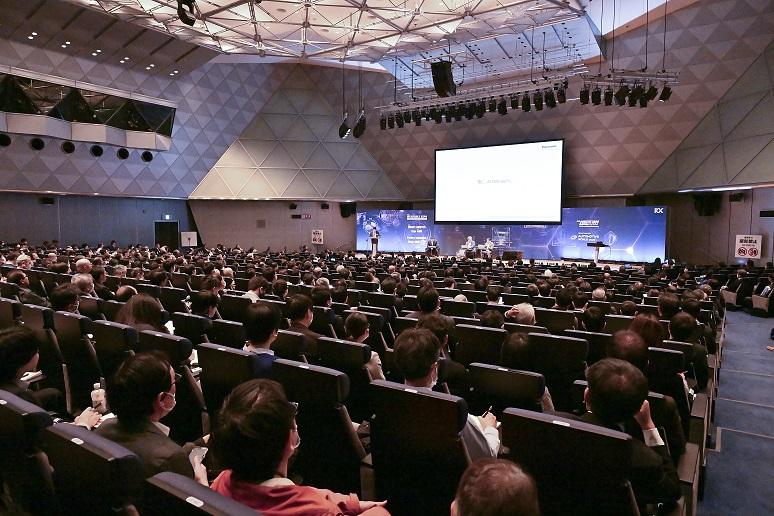The Future of Community and Mobility Week
Next-generation of digitally-centered communities
Japan Association for the 2025 World Exposition
The programme, together with the General Sponsors, explores: 'What does the future of digitally-centered communities look like? What are the hurdles to realization?'
Recorded video available
Discussion
- Others
| Transmission of simultaneous interpretation | Provided |
|---|---|
| Language of interpretation | Japanese and English |
-
Agenda2025
Organised Programme
- Time and
Date of
the event -
-
2025.05.17[Sat]
17:00 ~ 19:00
(Venue Open 16:30)
-
- Venue
- Theme Weeks Studio
Programme details
*Subtitles: Choose “Subtitles/CC” in the “Settings” (gear icon) at the bottom right of the YouTube video. *Subtitles may not show with multiple languages or overlapping audio.
Media on the Internet has been evolving and developing to lead to linkage of peoples from all walks of life that transcends distance and culture, so that new forms of community have emerged there. In this programme, we will invite leading figures from the world of media to talk about the formation and development of online communities in their respective media, and their outlook for the future. They will also discuss the role that online communities play in society, and the creation of new values, from the perspective of managing online communities, and explain their outlook for the future. If you are interested in the future of media and trends in online communities, this is a rare opportunity to hear from a range of prominent guests, so please join us.
Reports
【Session Summary】
The session titled “Next-generation of digitally-centered communitiess,” held on May 17, 2025, during the “Future of Community and Mobility” theme week, explored the fundamental question: “What kinds of communities will be shaped through digital technology in the future?” Organized as part of the Agenda 2025 initiative, the session considered both online and offline perspectives to envision a future society grounded in the crossing of cultures and values.
Rather than treating “digitally centered communities” as an abstract philosophical concept, the session approached it as a real-world implementation issue, engaging with the integration of technology, culture, and systems. The discussion elevated the topic into a practical vision for the future, where digital communities are not just a product of tools but a critical part of inclusive societal infrastructure.
Designing futures that integrate online and offline realities offered an opportunity to redefine what “transboundary co-creation” can mean in a digitally interconnected age.
【Speaker Summary: Yoichiro Miyake】
Yoichiro Miyake, serving as the session's moderator, offered a stimulating and intellectual perspective that combined game AI, the metaverse, urban spatial theory, and philosophy to explore the theme of “digitally driven next-generation communities.” Drawing on his extensive research in game artificial intelligence and the social structures of digital spaces, Miyake guided the session through the central question of how new forms of community emerge in the convergence of real and virtual worlds.
At the outset, he addressed the division between physical and digital spaces in contemporary society. As shared values once represented by “cities” or “nations” become fragmented, he argued that we must redesign how human connections are formed. Technologies like the metaverse and XR, he suggested, should be redefined not merely as tools but as platforms that mediate collective intelligence and empathy.
Miyake also examined the nature of “identity” and “personhood” in digital spaces, highlighting how individuals can participate in society through multiple avatars or digital selves. This “multiplicity of self” points to an emergent ethical and social model that understands identity and relationships as fluid and dynamic.
He presented examples from gaming spaces—such as cooperative play and asynchronous connections—as novel forms of collaboration that do not exist in traditional urban communities. These, he suggested, should inspire new models for restructuring real-world society.
Throughout the session, Miyake skillfully facilitated the dialogue by organically linking the panelists’ diverse expertise around key themes such as embodiment and space, language and platforms, economy and community, and death and memory. He repeatedly emphasized the importance of philosophical and ethical considerations in designing future digital spaces, alongside technological development.
In closing, he stated, “We should aim for a society centered not on technology itself, but on human dignity and relationships.” He emphasized that the core of digital community design lies not in convenience or efficiency, but in empathy and inclusion. His moderation, blending intellect and sensitivity, deeply engaged both speakers and audience, elevating the session into a thought-provoking forum.
【Speaker Summary: Masashi Kawashima】
Masashi Kawashima, Vice President of Games/Publishing at Niantic, Inc., offered practical insights into how communities are shaped in a society where the physical and digital merge. Speaking from his experience with AR-based platforms such as Pokémon GO and Ingress, he emphasized that these services are designed not simply as online games but as systems that create opportunities for real-world social interaction.
Kawashima described AR’s greatest innovation as the “reconstruction of meaning in place.” Locations are no longer just transit points or passive backdrops—they are redefined as layered realities where games, information, and communication converge. This concept of “Layered Reality” generates new narratives for urban and local spaces, reshaping people’s relationships to their environments.
He highlighted Niantic’s vision of a “Real-World Metaverse,” where digital experiences are grounded in physical presence and space. Unlike closed virtual worlds, Niantic’s model emphasizes serendipitous encounters and shared experiences in the real world. Collaborations with local governments, commercial facilities, and communities foster public participation and co-creation, mediated by digital platforms.
Kawashima noted that player interaction is deliberately designed into the platform, where “bringing people together” is itself a form of social value. In addressing challenges like isolation and social fragmentation, he proposed that AR can be a powerful tool to enable shared presence.
A particularly striking message from his talk was that “it is not technology but human intention and behavior that shape communities.” No matter how advanced the technology, its purpose and how it is shared must always be questioned. For this reason, Niantic focuses on nurturing user communities, encouraging independently organized events and ongoing dialogue with localities, seeing users not merely as consumers but as co-creators.
In conclusion, Kawashima emphasized, “It is not technology alone that builds the cities and societies of the future—it is how we use it and how we design systems to connect people.” His remarks encouraged the audience to reconsider the essential purpose of technology in fostering connection.
【Speaker Summary: Myo Nyien Ang】
Dr. Myo Nyien Ang, Associate Professor at Juntendo University’s Graduate School of Medicine, provided deep insight from the perspective of public and global health. She discussed how digital technology can impact the health and daily lives of vulnerable populations, including the elderly. Her research focuses on the intersection of health, technology, social inclusion, and evidence-based policymaking.
Ang began by highlighting the digital divide that became apparent during the pandemic—particularly disparities in access to information and digital literacy. For older adults, immigrants, and people with disabilities, the shift to online services often exacerbated isolation and health inequities. She emphasized the urgent need for inclusive ICT education and support systems.
She also stressed the importance of “multigenerational and multicultural coexistence” in community design. Technologies like XR and the metaverse, she explained, can facilitate communication across generational, linguistic, and cultural boundaries. In medical and elder care settings, tools for remote interaction have already shown positive outcomes in maintaining cognitive functions and providing psychological comfort.
Ang introduced the concept of “cultural appropriateness” in technology design, warning that if avatars’ appearances, voices, or interfaces do not align with users’ cultural contexts, they may provoke discomfort or exclusion. Therefore, participatory and co-creative approaches are essential to building inclusive systems.
From a policy perspective, she advocated for integrated digital inclusion programs through cross-sector collaboration in health, education, and social welfare. She emphasized the importance of bridging practical insights from the field with academic evidence.
Ang also cautioned against technology becoming an end in itself, arguing that the most important factor is to maintain a “human-centered perspective.”
In conclusion, she stated, “The communities we envision for the future must be ones where technology expands, rather than excludes, the possibilities for connection.” Her message powerfully reaffirmed the ethical and human dimensions of technological implementation.
【Speaker Summary: Cathy Hackl】
Cathy Hackl, CEO of Spatial Dynamics and a globally recognized tech and gaming executive, futurist, and author, shared her forward-looking vision of how space computing, the metaverse, and AI are reshaping the foundations of digital communities. With experience at leading companies such as Apple, Magic Leap, and HTC Vive, she explored how human identity and culture are being reconstructed in an age where the line between virtual and physical reality is increasingly blurred.
Hackl described technology not merely as a tool, but as a device that expands human imagination and creativity. She emphasized that spatial computing is transforming how we experience the world. In metaverse environments, people can express themselves beyond physical, linguistic, or national constraints, forming “fluid communities” that are diverse, real-time, and co-creative.
She highlighted the metaverse’s growing role not just in entertainment but as a platform for economic activity, education, healthcare, and cultural expression. Technologies such as NFTs and digital twins are increasingly integrated into contexts like art, fashion, and urban design—where “space = experience = economic value.”
At the same time, Hackl acknowledged the risks accompanying these developments. She emphasized the need for the tech industry to address issues such as data sovereignty, privacy, inclusion, and cultural barriers. From the early stages of development, she argued, it is crucial to incorporate diverse user voices through “inclusive design.” She advocated for a design philosophy that balances global standards with local cultural perspectives, resisting a Western-centric view.
Hackl also pointed out the potential of the metaverse as a space where underrepresented voices, including women and minorities, can be empowered. Sharing personal and family experiences, she described how XR and AI can stimulate empathy and imagination, laying the groundwork for a more connected future.
In closing, she declared, “The future is not built by technology, but chosen through values.” Her vision underscored the need for a multidisciplinary approach—encompassing culture, economy, and ethics—in designing the communities of the future.
【Speaker Summary: Ayumu Matsuyama】
Ayumu Matsuyama, President of X Corp. Japan (formerly Twitter), discussed the formation of digital communities from the platform’s perspective, addressing both its social responsibilities and the future of social spaces. Positioned at the intersection of media, advertising, and user engagement, his talk deeply questioned how to balance public interest and economic viability in digital environments.
He began by outlining the platform’s role in the “democratization of information,” highlighting how X enables real-time communication during social movements and disasters, and functions as civic infrastructure. The resulting “global town square” of shared information and emotion, he explained, form the fertile ground from which digital communities grow.
However, Matsuyama also acknowledged the inherent tension between freedom of expression and the protection from harmful content. He emphasized that platform responsibility goes beyond technological moderation—it also involves building trust through transparent governance and dialogue with users.
He noted that communities on X are not limited by geography but are instead formed through shared interests. These interest-based networks generate new types of social structure, distinct from traditional community bonds. Global in scale yet intimate in feel, these groups exemplify new possibilities for coexistence based on shared emotions.
Matsuyama also addressed advertising, emphasizing the importance of “communication rooted in user empathy.” As algorithms often fail to fully capture human emotions and contexts, understanding these subtleties is a key challenge for future platform design. Advertising, he suggested, should also be seen as part of cultural co-creation.
In closing, Matsuyama stated, “In an age where technology connects people, the most important question is why we connect.” He emphasized that the ethical dimension—the quality and purpose of connection—must guide the design of future digital communities. His talk pointed toward a future of social media centered on meaningful human dialogue.
【Discussion Summary】
In the second half of the session, a cross-sectoral panel discussion was held with all speakers. Centered around questions such as “How should digitally driven next-generation communities be formed?” and “What social meaning emerges from the fusion of physical and digital realities?”, the dialogue explored diverse and intersecting perspectives.
Moderator Yoichiro Miyake opened by defining communities as “assemblages of people who share a certain time, space, and value.” In an era where these elements now extend into digital realms, he emphasized the need to design new models of empathy and co-creation. Responding to this, Masashi Kawashima explained how Niantic’s games facilitate spontaneous encounters in real-world spaces, and how “place-centered” social structures can influence regional engagement and economies.
Dr. Myo Nyien Ang offered a perspective rooted in health and welfare, warning that for the elderly and socially marginalized, the very tools of connection could become mechanisms of exclusion. She stressed the importance of user-centered design and inclusive social policies that must accompany technology implementation.
Cathy Hackl, drawing on a global viewpoint, emphasized the ethical design of spaces that transcend physical and cultural boundaries. She argued that including diverse voices—especially those of women and minorities—enhances both the creativity and sustainability of communities.
Ayumu Matsuyama reflected on how “interest-based” connections on X (formerly Twitter) are generating novel social architectures that differ from traditional community bonds. He explored the intersection of trust and media functions in digital spaces, and the challenge of creating “warm connections” between algorithmic efficiency and human sensitivity.
Throughout the discussion, a shared recognition emerged: digital technology has the potential to connect people across space and identity, but its design and governance must be rooted in deep ethical consideration. In an era where the boundaries between real and digital are dissolving, the challenge is to live with technology while maintaining a human-centered perspective.
Miyake concluded, “The future of communities will be shaped not by technology, but by how we empathize with and include others.” His closing statement framed a powerful question for all participants—both philosophical and practical—at the intersection of digital technology and social design.
Cast
Moderator
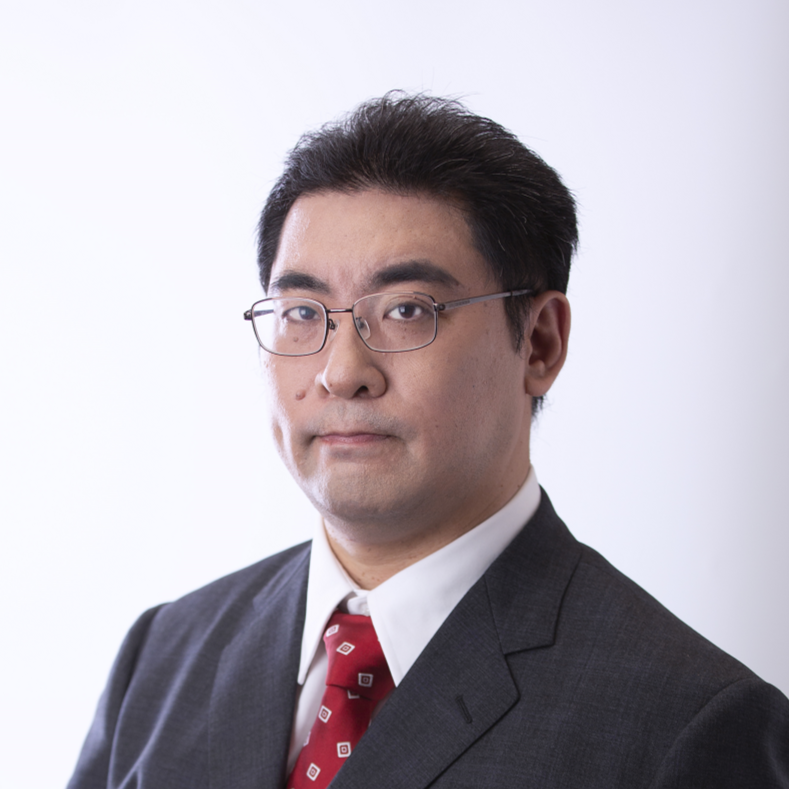
Yoichiro Miyake
Specially appointed professor,Institute of Industrial Science, the University of Tokyo
He researches and develops “artificial intelligence for digital games”, and aims to apply it to the real world as “spatial AI”. He majored in mathematics at Kyoto University, and has a master's degree in physics from Osaka University and a Ph.D. in engineering from the University of Tokyo. He is a specially appointed professor at Institute of Industrial Science, the University of Tokyo, a specially appointed professor at the Graduate School of Artificial Intelligence and Science, Rikkyo University, a visiting professor at Kyushu University, a board member of the Digital Games Association of Japan, and a board member and chair of the editorial committee of the Japanese Society for Artificial Intelligence.
View Profile
Close
close
Speakers

©Niantic, Inc.
Masashi Kawashima
VP, Games & Publishing, Niantic, Inc.
Masashi Kawashima is Vice President of Publishing (Ingress, Peridot). Niantic initially started as a “startup” within Google, and spun out from Google in October 2015. He joined Niantic Labs in 2013 as a UX/Visual designer and designed Ingress’ visual and user experiences.
Masa also contributed to the launch of a new ground-breaking project for mobile game called “Pokémon GO”, in which players can look for and capture Pokemon in the real world.
View Profile
Close
close
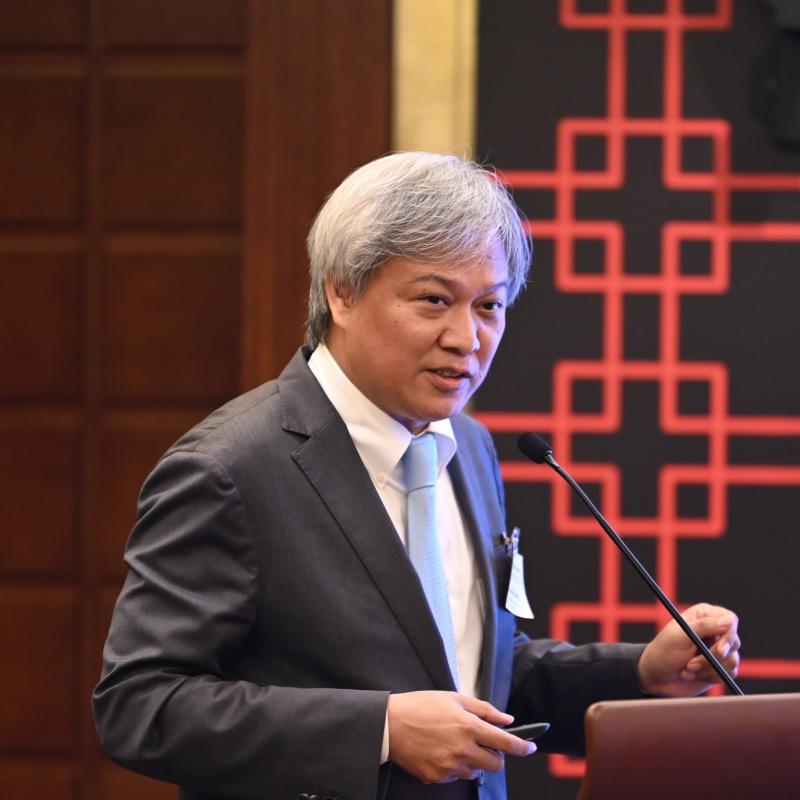
Myo Nyein Aung
Associate Professor, Department of Global Health Research, Graduate School of Medicine, Juntendo University
Dr. Myo Nyein Aung MD, MSc, PhD is an Associate Professor in the Department of Global Health Research at the Graduate School of Medicine, Juntendo University,Tokyo, Japan. He is also affiliated with the Juntendo Advanced Research Institute for Health Sciences and the Faculty of International Liberal Arts. Dr. Aung is the principal investigator of the Digitally Inclusive Healthy Ageing Communities (DIHAC), a cross-cultural study in, Japan, the Republic of Korea, Singapore, Thailand and India. In 2024 He was invited several times by UN-ESCAP and international conferences to talk about digital literacy for older persons.
He is dedicated to health promotion, community-based social innovation for healthy ageing, and digital inclusion research internationally. His current research focuses on empowerment models of older people’s digital inclusion in cross-cultural contexts. He organized series of multidisciplinary meetings entitled as DIHAC meetings that are being participated by academics and professionals from Asia, Europe, Africa and America.
He is also the principal investigator of Community Integrated Intermediary Care (CIIC) for Thai older persons, a cluster randomized controlled trial funded by the World Health Organization, The study implemented and evaluated a new prevention based long-term care model for low- and middle-income countries. Furthermore, he conducted preventive intervention, randomized controlled trials and many observational studies in multi-disciplinary approaches.
He teaches courses on global gerontology and policy in collaboration with WHO, JICA, and JAGES study experts,for graduate students. He has served as an adviser for health systems strengthening low- and middle-income countries, with JICA and USAID.
Dr. Aung has authored more than 80 original research articles, with his work published in top journals such as The Lancet and The Gerontologist. Research website https://digital-ageing.com/
View Profile
Close
close

Cathy Hackl
Tech & Gaming Executive, CEO of Spatial Dynamics, Author, Keynote Speaker, Futurist, and Podcast Host
Cathy Hackl is a globally recognized tech & gaming exec, futurist, & speaker focused on spatial computing, virtual worlds, augmented reality, AI, & gaming platforms strategy. She’s the co-CEO of Spatial Dynamics, a spatial computing and AI solutions company & a top tech voice on LinkedIn. Hackl has worked at Amazon Web Services (AWS), Magic Leap, and HTC VIVE and has worked with companies like Nike, Ralph Lauren, Walmart, Louis Vuitton, & Clinique on their emerging tech & gaming journeys. As a sought-after keynote speaker, she’s spoken at Harvard Business School, MIT, SXSW, Comic-Con, WEF, CES, MWC, & more. She’s one of Ad Age’s Leading Women of 2023, was featured on the cover of Forbes Latam’s 100 Most Powerful Women 2023 issue, and is on the Vogue Business 100 Innovators inaugural list. She hosts Adweek’s highly successful TechMagic podcast and is popularly known in tech circles as the Godmother of the Metaverse. Cathy has been a fixture in the world of immersive technology for almost a decade with many media appearances in CNBC’s Squawk Box, 60 Minutes, CNN, Good Morning America, GQ, Time, The Economist, Bloomberg, and is a guest editor for Vogue Singapore. In 2022, she became the first human to ring NASDAQ’s opening bell and open the financial markets both in physical and avatar form while doing so on live television.
View Profile
Close
close
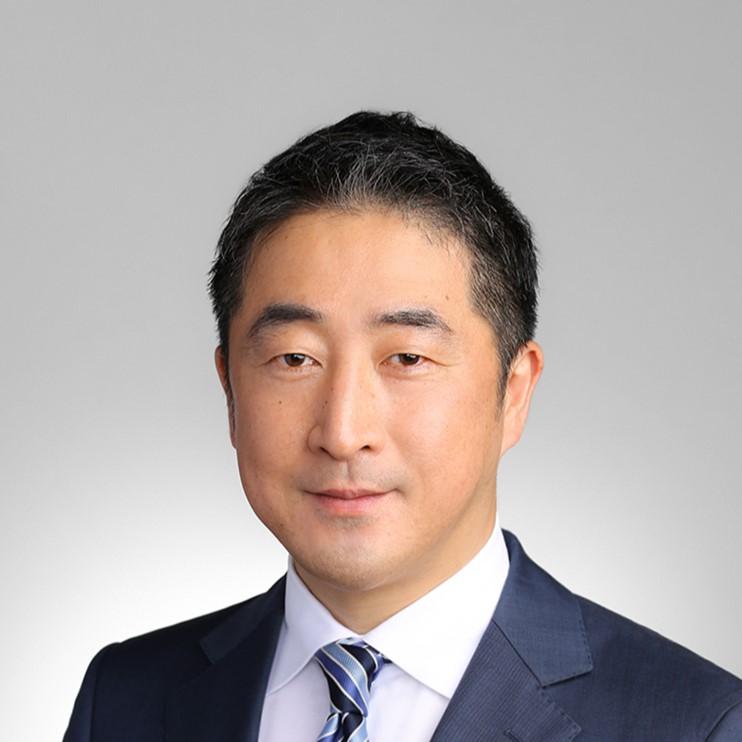
Ayumu Matsuyama
X Corp. Japan K.K. Representative Director
As Head of X Corp. Japan, Ayumu leads the overall advertising business in Japan. Since joining Twitter in 2014, he has overseen the advertising business for major domestic clients across the consumer goods and telecommunications industries. Prior to Twitter, Ayumu served as Division Head of Advertising at Microsoft Japan, where he ran Microsoft’s division in charge of advertising agencies. His career began in sales at Yomiuri Advertising Inc. from 1999 to 2005.
View Profile
Close
close
The Future of Community and Mobility Week
Next-generation of digitally-centered communities
The programme, together with the General Sponsors, explores: 'What does the future of digitally-centered communities look like? What are the hurdles to realization?'
-
2025.05.17[Sat]
17:00~19:00
(Venue Open 16:30)
- Theme Weeks Studio
- * Programme times and content are subject to change. Any changes will be announced on this website and via the ticket booking system.
- * The schedule is subject to change depending on the organiser's circumstances.
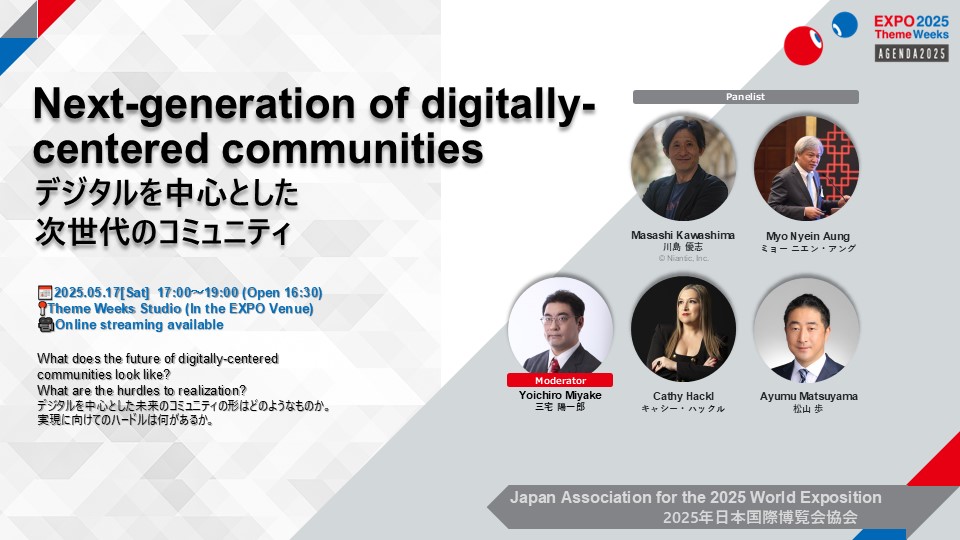
OTHER PROGRAM
The Future of Community and Mobility Week


